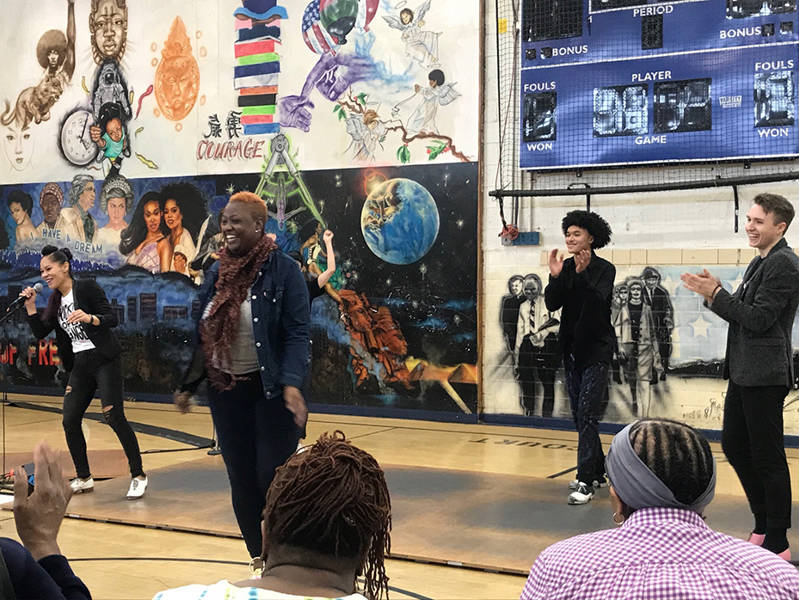
“What do your Roots Sound Like?” Arts on the Move with New York City Center
Digitalization of physical collections, livestreaming, online recordings of performances, and interactive online resources undoubtedly give a broader public the potential for access—and allow for art institutions to be appreciated in new ways.
But digital access looks qualitatively different from in-person access. There will always be a distance between the thing itself and its digital simulacrum, and that distance matters for the power of art. The physical immediacy, personal nature, and spontaneity of live artistic engagement can’t be replaced.
That spontaneity was on full display in the inaugural season of City Center On The Move.
On a warm day this April, more than two hundred people had packed into the Brownsville Recreation Center in Brooklyn for the premier of City Center On The Move. With an explosion of tapped percussion, the show began, as three tap dancers wove complex and surprising rhythms to live musical accompaniment. Leading the way was internationally acclaimed tap dancer and choreographer Ayodelle Casel.
The musicians and tap dancers were not the only people on stage. Vocal improvisation from an audience member following an open invitation enriched one song. Casel invited kids from the crowd to join the dancers onstage to learn tap moves, and some of the subsequent performances resolved themselves into impromptu tap lessons. As Casel said in an interview about the show on New York Public Radio, “Tap is a very improvisational form… though the show is, I would say, 98.9% choreographed, there are moments where the dancers express themselves.”
After the opening salvo of tap, she asked each of the musicians and dancers, “what do your roots sound like?” and each in turn played or tapped an introduction. Casel spoke about her own relationship with tap, and performed a piece meditating the roles that had traditionally not been available to women of color in tap.
The show, as designed by Casel, was explicitly personal to the performers. City Center On The Move is premised on access, and for Casel, that’s personal. “I am from the Bronx,” she said, “and one of the things that’s really exciting about doing On The Move is that my neighbors, who I’ve known for 25 years and who have never seen me perform, are coming to one of our shows.”
The show made stops at community venues in all five of New York City’s boroughs, and every performance was free, with support from the Stavros Niarchos Foundation (SNF), among others. Launched as New York City Center celebrates its 75th anniversary, City Center On The Move drew inspiration and practical guidance for the new initiative from the Public Theater’s Mobile Unit, for which SNF also provided support.
Increasing access, both in-person and digital to arts and cultural resources is an important focus of SNF’s work. A portion of that work is support for expanding access to cultural resources through technology, as with the wonderful Virtual Museum of Greek Immigration. But an essential avenue of increasing access to the arts will continue to be lowest-tech and most direct method possible: physically transporting arts programming near to those who might otherwise not access it.
City Center On The Move will return in spring 2020 with performances around New York City featuring The Civilians, a company that blends theater and journalism to probe contemporary issues.